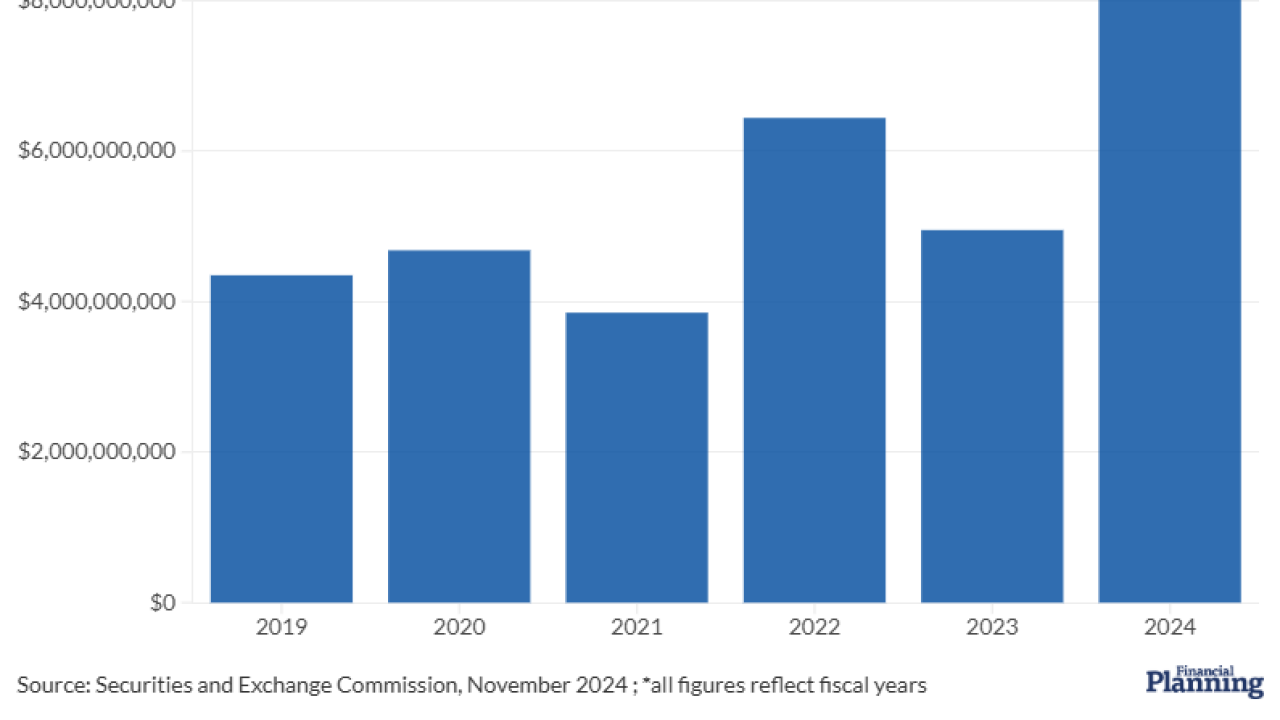Ever since the SEC changed its rules to allow sponsors to offer actively managed exchange traded funds in 2007, this asset class has been putting down roots. It reached almost $15 billion in assets at the end of October, according to Morningstar. While this is only a small fraction of the total $1.64 trillion ETF market, these products now offer advisors some interesting opportunities not available through either mutual funds, stock purchases, alternative asset classes or traditional indexed ETFs.
But as with any asset class, these funds have attracted their fair share of naysayers. They come with risks that experts say make them less attractive for both sponsors and investors than indexed ETFs.
The actively managed ETF market is currently composed primarily of fixed income funds, but equity and managed futures fundsboth in their infancyare slowly gaining traction. The actively managed fixed income ETF category is dominated by PIMCO, one of the largest fixed income money managers in the world. The firm has packaged one of its most popular bond funds, run by Bill Gross, into a low-fee ETF, ticker symbol BOND.
With no upfront load, a 0.55% annual expense ratio and the same investment strategy as PIMCO's Total Return mutual fund, BOND quickly became the largest actively managed ETF in the United States. BOND, along with a sister ETF, MINT, which buys short-term securities and has gained popularity with ETF investors, make up half of all the assets currently parked in actively managed ETFs, with over $8 billion in assets, according to Morningstar.
Equity and managed future ETFs are new products and, despite their lower cost structure compared to mutual funds, they have had a harder time making inroads. There are several reasons for that.
First is their newness. Without performance history, many funds have been slow to reach the critical mass of $100 million in assets under management, the amount at which advisors and investors gain confidence in a fund's staying power.
Second is transparency. The SEC requires daily disclosure of ETF positions for actively managed ETFs compared to quarterly disclosure for indexed ETFs and mutual funds. Since proprietary research and data-driven algorithms underpin most stock-picking strategies, this requirement for transparency could be a turn-off for stock portfolio managers who are used to the three-month window of privacy they get with a mutual fund during which they can ramp up their positions without having to disclose the activity. That's why some experts believe that managers and funds sponsors have largely shied away from actively managed equity ETFs. (Fixed income ETFs don't face the same transparency concerns; lower volatility fixed income securities don't favor follow-the-leader and front-running strategies.
Actively managed futures ETFs face the same transparency requirements as equity funds, but the deep liquidity of futures markets has attracted a widening array of new products in this category. Managed futures funds offer some unique opportunities for advisors and their clients, chief among them exposure to non-traditional asset categories that have been closed to most individual investors, at a much lower price point. Managed futures ETFs can invest long and short in Treasury futures, currency futures, equity futures, non-deliverable currency forwards, commodity futures, commodity swaps, U.S. government and money market securities. The idea behind these funds is to generate returns that are not correlated to the stock and bond markets.
Why Bother?
Given the challenges inherent in these products, it makes sense to ask why a sponsor would offer them to begin with. The short answer is that they sellat least in the fixed income spaceand are capturing assets.
One actively managed product with a quick uptake was State Street-sponsored SRLN, the SPDR Blackstone/GSO senior loan ETF. It launched in April 2013, attracting over $500 million in assets in seven months. Investing in senior secured loans, boasting an almost 3% yield with low risk, full liquidity, transparency and a 0.9% management fee, advisors and investors have been attracted to the double name brand for a place to park cash.
"It's all things income and all things alternative" in the actively managed ETF space, says Noah Hamman, founder and CEO of AdvisorShares, an ETF sponsor firm dedicated to actively managed products. AdvisorShares offers 18 ETFs with over $1 billion in assets under management.
Another benefit of these products is that actively managed ETFs can rebalance as often as they want, unlike indexed ETFs, which the SEC limits to rebalancing only once a year. Hamman also sees actively managed ETFs as an opportunity to bring talented but lesser known portfolio managers to a bigger audience, possibly building a following for some managers similar to that of leading mutual fund managers.
"We're going to give the access to a new group of managers," he says, "Advisors are fully educated on the benefits of diversification. Part of that is to diversify your managers."
Persistent Doubts
Despite their growing popularity, there are some persistent doubts about the basic logic of putting client assets into an actively traded ETF. Years of research have shown that active managers generally fail to outperform their benchmark indexes by more than the manager's fee, says Ben Johnson, Morningstar's director of passive funds research.
"Just putting an existing manager in a new vessel doesn't alter the math of active management," he says, pointing out that "collectively, active managers have failed to outperform." Even a sponsor of a newly created actively managed fixed income ETF fund agrees with Johnson.
"More people are going to realize that most active managers do not outperform the broad-based indexes," says Luciano Siracusano, chief investment strategist at WisdomTree. That didn't stop WisdomTree from launching its actively managed product, which, it should be noted, is as close to an indexed ETF as it is possible for an actively managed ETF to be.
WisdomTree's $1.24 billion ELD, Emerging Markets Local Debt Fund, holds sovereign debt in emerging markets. As of the end of November, its top three holdings were bonds of Russia, Mexico and Brazil. The fund is based on rules and criteria, just like an index ETF would be, but because there is no index for this style of portfolio, the funds must be legally considered "actively managed."
No doubt, investor appetite for alternative investment categories not amenable to indexing will continue to drive new actively managed ETF products. But as of now, there is nothing on the horizon as big as PIMCO's bet on actively managed ETFs. "If we saw good parents and great track records lining up to participate in actively managed ETFs, there would be a lot of potential," says Morningstar's Johnson. "But they have been few and far between so far."
Indeed, mutual fund firms would seem to have little incentive to replicate their products in a cheaper and more transparent format. But in staying out of the running, the large active fund firms like Fidelity and T. Rowe Price risk allowing innovators to establish a track record and possibly eat further into mutual fund market share.
For now, expect new products in actively managed ETFs to target income, commodities, emerging markets, managed futures, hedged products and other alternatives. "The theme as of late is 'all things different,'" says AdvisorShare's Hamman.





